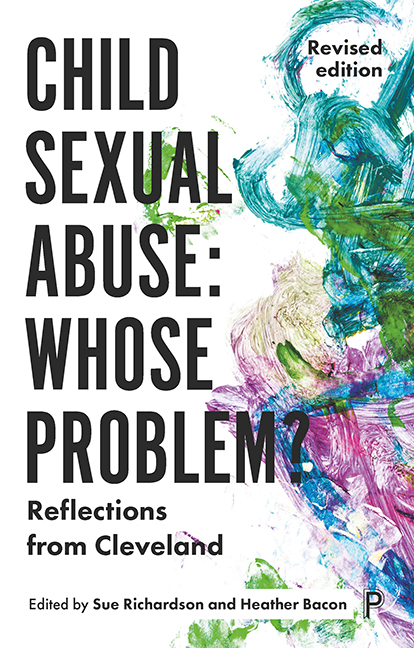Book contents
- Frontmatter
- Dedication
- Contents
- List of tables and figures
- List of abbreviations
- Notes on the editors and contributors
- Acknowledgements
- Preface
- Introduction:Why Cleveland still matters: connections with a new era
- one From Colwell to Cleveland: 1973 to 1988
- two A framework of belief
- three The medical diagnosis of child sexual abuse: the paediatrician’s dilemma
- four After the medical diagnosis: everyone’s dilemma
- five The continuum of disclosure
- six Seen but not heard: the children of Cleveland
- seven The unwanted message: child protection through community awareness
- eight Questions not answers: progressing the debate
- Conclusion:Thirty years later: how far have we progressed?
- Appendix
- References
- Index
three - The medical diagnosis of child sexual abuse: the paediatrician’s dilemma
Published online by Cambridge University Press: 13 April 2022
- Frontmatter
- Dedication
- Contents
- List of tables and figures
- List of abbreviations
- Notes on the editors and contributors
- Acknowledgements
- Preface
- Introduction:Why Cleveland still matters: connections with a new era
- one From Colwell to Cleveland: 1973 to 1988
- two A framework of belief
- three The medical diagnosis of child sexual abuse: the paediatrician’s dilemma
- four After the medical diagnosis: everyone’s dilemma
- five The continuum of disclosure
- six Seen but not heard: the children of Cleveland
- seven The unwanted message: child protection through community awareness
- eight Questions not answers: progressing the debate
- Conclusion:Thirty years later: how far have we progressed?
- Appendix
- References
- Index
Summary
Editors’ summary
This chapter, written by the two paediatricians whose diagnoses of sexual abuse precipitated the crisis, provides the medical data submitted to the Butler-Sloss Inquiry on 157 children in which abuse was suspected or detected as part of a differential diagnosis. They describe the children as falling into two groups: Group A, in which there was already concern about sexual abuse, such as a disclosure by the child; and Group B, in which the paediatrician was the first to raise the possibility of abuse while seeing the child for other reasons. Although this latter group was a source of contention, the authors stress the importance of the paediatrician's role in initiating protection of children whose abuse would otherwise continue. A significant number of all those in whom abuse was diagnosed (Groups A and B combined) made a disclosure, this being more likely if the child was older or in a safe place. The chapter poses the dilemmas for the doctor in the context of professional and political considerations.
You will readily admit that it would be a good thing to have a second method of arriving at the aetiology of hysteria, one in which we should feel less dependent on the assertions of the patients themselves. A dermatologist, for instance, is able to recognize a sore as leuetic (i.e. syphilitic) from the character of its margins, of the crust on it and of its shape, without being misled by the protestation of his patient, who denies any source of infection for it; and a forensic physician can arrive at the cause of an injury, even if he has to do without any information from the injured person. (Freud, 1886, in Masson, 1992, p. 260)
Introduction
This chapter describes the 157 children whose details were submitted by us, as two consultant paediatricians, to the Cleveland Inquiry in 1987. The children form two groups. In Group A, there was a concern about sexual abuse before the child saw the paediatrician. In Group B the paediatrician was the first to raise the possibility of sexual abuse in children referred with other health problems. Essential data is provided to show how the medical diagnosis was made for each group.
- Type
- Chapter
- Information
- Child Sexual Abuse: Whose Problem?Reflections from Cleveland (Revised edition), pp. 83 - 102Publisher: Bristol University PressPrint publication year: 2018



